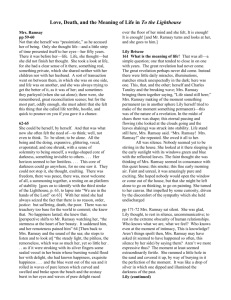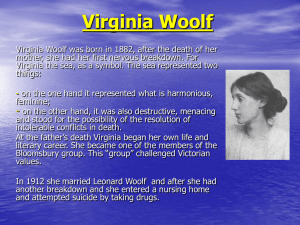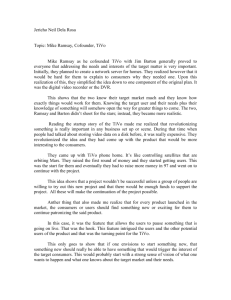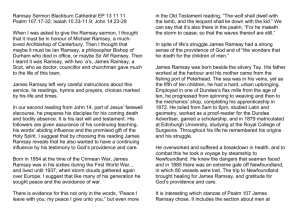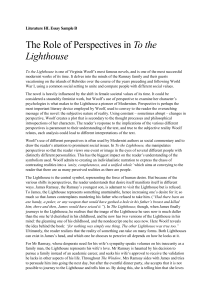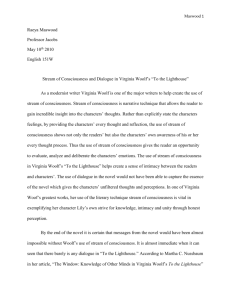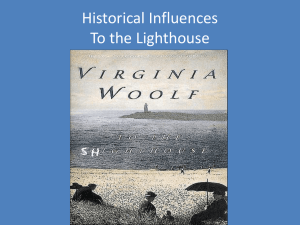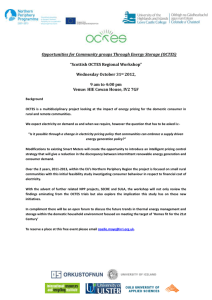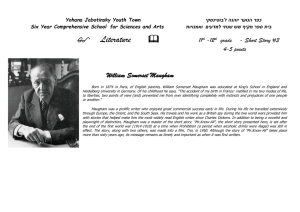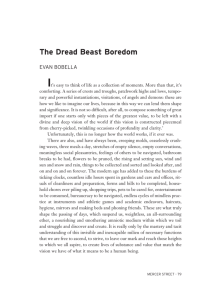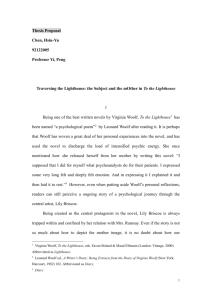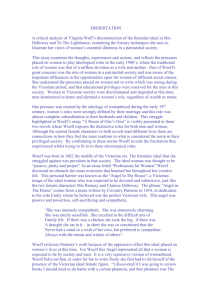Virginia Woolf
advertisement
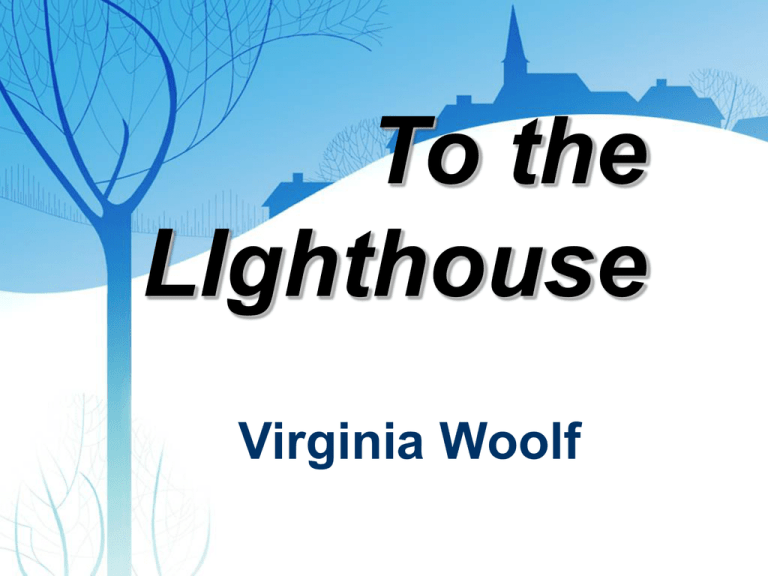
To the LIghthouse Virginia Woolf Virginia Woolf (1882-1941) "Imaginative work... is like a spider's web, attached ever so lightly perhaps, but still attached to life at all four corners." English novelist and essayist Virginia Woolf (1882-1941) Woolf is a great British writer who made an original contribution to the form of the novel, a distinguished essayist and critic, and a central figure of Bloomsbury group. Virginia Woolf was born in London, as the daughter of Julia Jackson Duckworth, a member of the Duckworth publishing family, and Leslie Stephen, a literary critic, a friend of Meredith, Henry James, Tennyson, Matthew Arnold, and George Eliot, and the founder of the Dictionary of National Biography. Woolf was educated at home by her father, and grew up at the family home at Hyde Park Gate. The sudden death of her mother in 1895, when Virginia was 13, and that of her half sister Stella two years later, led to the first of Virginia's several nervous breakdowns. The death of her father in 1904 provoked her most alarming collapse and she was briefly institutionalized. Major Characters Mrs. Ramsay Mr. Ramsay James Ramsay Lily Briscoe This is a stream-of-consciousness novel.Especially, Virginia used the technique of stream of consciousness and symbolic writing perfectly ,which was highly praised by many critics. This novel is an extraordinarily poignant evocation of a lost happiness that lives on in the memory. For years now, the Ramsays have spent every summer in their holiday home in Scotland, and they expect these summers will go on forever. In this, her most autobiographical novel, Virginia Woolf captures the intensity of childhood longing and delight, and the shifting complexity of adult relationships. From an acute awareness of transcience, she creates an enduring work of art. To the Lighthouse (plot summary) • << To the Lighthouse>> can be divided into three sections: “The Window,” “Time Passes,” and “The Lighthouse.” Each section is fragmented into stream-ofconsciousness contributions from various narrators. – Part I: The Window • The novel is set in the Ramsays' summer home in the Hebrides, on the Isle of Skye. The section begins with Mrs Ramsay assuring James that they should be able to visit the lighthouse on the next day. This prediction is denied by Mr Ramsay, who voices his certainty that the weather will not be clear, an opinion that forces a certain tension between Mr and Mrs Ramsay, and also between Mr Ramsay and James. This particular incident is referred to on various occasions throughout the chapter, especially in the context of Mr and Mrs Ramsay's relationship. • The Ramsays have been joined at the house by a number of friends and colleagues, one of them being Lily Briscoe who begins the novel as a young, uncertain painter attempting a portrayal of Mrs. Ramsay and her son James. Briscoe finds herself plagued by doubts throughout the novel, doubts largely fed by the statements of Charles Tansley, another guest, claiming that women can neither paint nor write. Tansley himself is an admirer of Mr Ramsay and his philosophical treatises. • The section closes with a large dinner party. Mr Ramsay nearly snaps at Augustus Carmichael, a visiting poet, when the latter asks for a second serving of soup. Mrs Ramsay, who is striving for the perfect dinner party is herself out of sorts when Paul Rayley and Minta Doyle, two acquaintances whom she has brought together in engagement, arrive late to dinner, as Minta lost her grandmother’s brooch on the beach. • Part II: Time Passes • The second section is employed by the author to give a sense of time passing. Woolf explained the purpose of this section, writing that it was 'an interesting experiment [that gave] the sense of ten years passing.'. This section's role in linking the two dominant parts of the story was also expressed in Woolf's notes for the novel, where above a drawing of an "H" shape she wrote 'two blocks joined by a corridor.' • During this period Britain begins and finishes fighting World War I. In addition, the reader is informed as to the fates of a number of characters introduced in the first part of the novel: Mrs Ramsay passes away, Prue dies in childbirth, and Andrew is killed in the war. Mr Ramsay is left alone without his wife to praise and comfort him during his bouts of mortal fear and his anguish over doubts regarding his self worth. • Part III: The Lighthouse • In the final section, “The Lighthouse,” some of the remaining Ramsays return to their summer home ten years after the events of Part I, as Mr Ramsay finally plans on taking the long-delayed trip to the lighthouse with his son James and daughter Cam(illa). The trip almost doesn’t happen, as the children hadn't been ready, but they eventually take off. • En route, the children give their father the silent treatment for forcing them to come along. James keeps the sailing boat steady, and rather than receiving the harsh words he has come to expect from his father, he hears praise, providing a rare moment of empathy between father and son; Cam's attitude towards her father has changed as well. • They are being accompanied by the sailor Macalister and his son, who catches fish during the trip. The son cuts a piece of flesh from a fish he has caught to use for bait, throwing the injured fish back into the sea. • While they set sail for the lighthouse, Lily attempts to complete her long-unfinished painting. She reconsiders Mrs Ramsay’s memory, grateful for her help in pushing Lily to continue with her art, yet at the same time struggling to free herself from the tacit control Mrs Ramsay had over other aspects of her life. Upon finishing the painting and seeing that it satisfies her, she realizes that the execution of her vision is more important to her than the idea of leaving some sort of legacy in her work – a lesson Mr Ramsay has yet to learn. opinion • The meaning of life is that the existence of life itself. So, no matter be "to the lighthouse" or anywhere else are always in the river of life. Don't dispute, the journey of life is very different and very much the same. wherever the river flows; all is one kind of existence, which is fleeting and never dies. The end.
